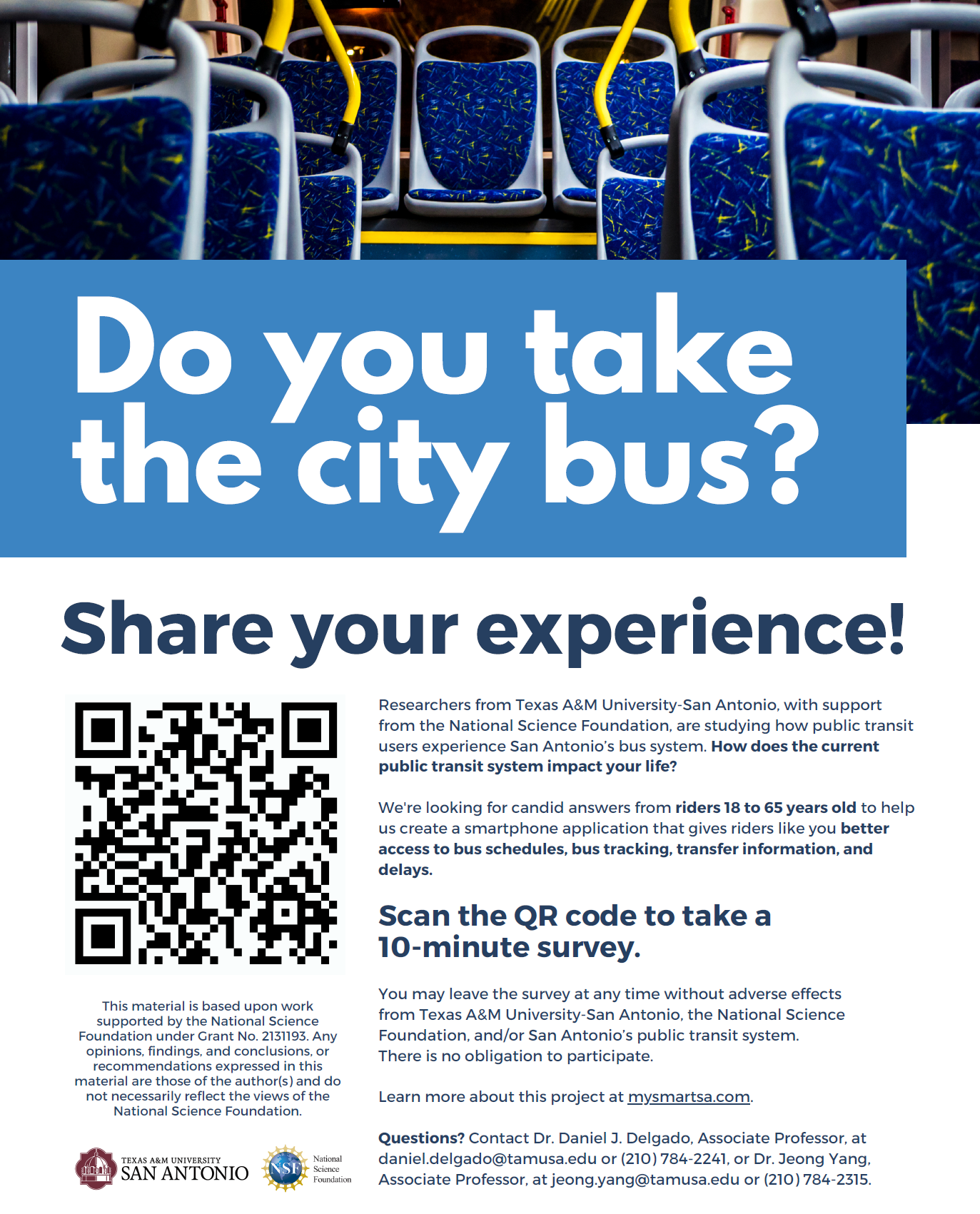Social Impact Research
In San Antonio, there is a significant digital divide separating much of the community's access to the internet, however, a significant portion of those who do not have internet access in their homes do have access through their smart phones. Moreover, it's through their smart phones that those in poverty access the internet and in San Antonio its these individuals who represent a significant portion of ridership on VIA transit. Targeting these riders' experiences and likelihood to ride will be the primary focus for understanding the importance of via buses in the lives of those living in poverty in San Antonio. This application will provide a real-world impact on these communities by providing them with updated data on arrivals, departures, and capacity of buses thus enabling efficient use of bus systems in their daily lives. Ultimately enabling those who are poor greater access to previously difficult-to-access parts of San Antonio. The reduction of barriers to spatial access by providing greater accuracy in scheduling and other commuting data represents significant strides in the reduction of class and racial inequalities overall. Those in poverty will not be the only users addressed as our project also aims to increase ridership across the city and hope to expand the ridership among all socioeconomic strata and racial/ethnic demographics with increased reliability in data for commuting.
Research Questions
(1) How do racial/ethnic and class stratified communities in San Antonio access buses?
(2) How will issues of race and class be reduced by the introduction of applications, such as SmartSAT, aimed at clearer and more functional schedules for buses?
(3) How will greater accuracy in bus arrival times and other transit information increase reliability for riders?
(4) What will this mean for the overall facilitation of greater equity and access throughout the city of San Antonio?
